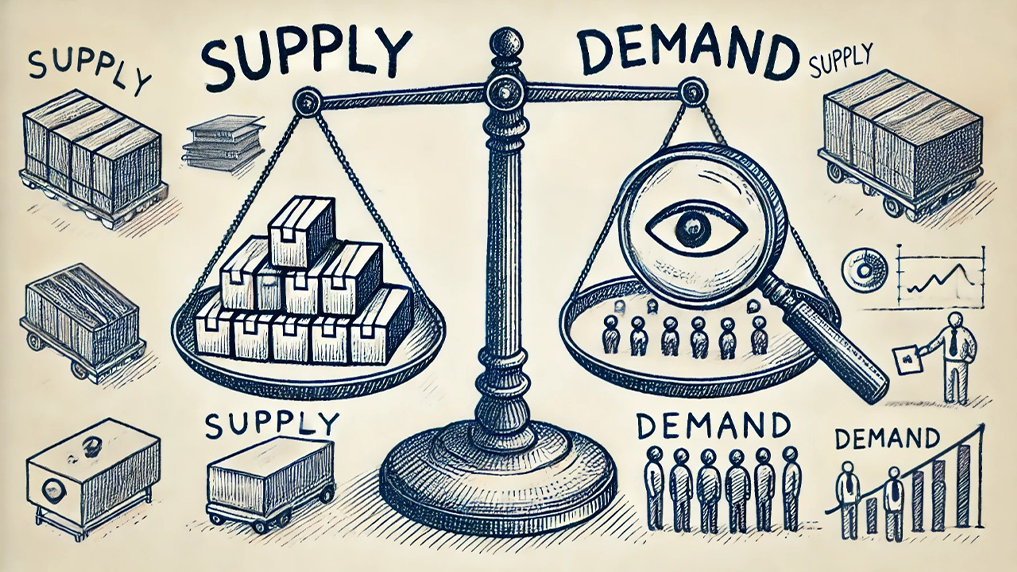
- By food-experts
- April 14, 2025
- No Comments
The Overlooked Priority: Studying Supply Before Demand in Market Analysis
The Overlooked Priority: Studying Supply Before Demand in Market Analysis
Ahmed Samir Ragab, Food Marketer, MD Food-Xperts
Market analysis often prioritizes understanding demand—consumer preferences, market size, and purchasing behavior—over other considerations. While this demand-first approach is essential, it frequently leads to significant oversight: the feasibility of supply. A business opportunity that looks promising on paper can quickly unravel if supply chain challenges are ignored. I have seen this firsthand in my career, where the lack of attention to supply dynamics led to expensive lessons. These experiences have solidified my belief that studying supply before demand is a critical step in any market analysis.
Twenty years ago, I was involved in a project to establish a new restaurant concept. We invested heavily in studying the demand side of the market, conducting extensive research to understand consumer preferences, pricing strategies, and the competitive landscape. Everything pointed to a high-potential opportunity. However, once we moved closer to execution, we discovered a major roadblock: a key ingredient for our menu was unavailable in the local market at the necessary quality and consistency. Importing this ingredient proved prohibitively expensive and logistically complex, completely undermining the feasibility of the concept. The realization came too late, after significant time and financial resources had already been spent.
A decade later, I encountered a similar issue in another industry. This time, I was exploring a local production opportunity for pet food, a market segment that was clearly underserved and offered strong demand potential. The idea was to create a competitive, locally produced offering to reduce reliance on imports. However, as we delved deeper into the supply side, we discovered that a critical ingredient essential for pet food formulations was banned for import in the local market. This regulatory barrier rendered the project unfeasible, despite the strong demand signals we had identified.
These personal experiences underscore the importance of prioritizing supply chain analysis before investing in demand research. Understanding whether the necessary materials, ingredients, or resources are available locally—or can be imported feasibly—should be the first step in evaluating any business opportunity. This includes analyzing factors such as availability, quality, cost, customs regulations, taxes, and potential cultural or regulatory barriers.
For example, high import duties, inconsistent quality, or delays in obtaining raw materials can make otherwise attractive opportunities unsustainable. Similarly, cultural or legal factors, like consumer preferences for locally sourced materials or regulatory restrictions on specific ingredients, can present insurmountable challenges. By addressing these issues upfront, businesses can avoid costly mistakes and redirect resources toward more viable opportunities.
A supply-first approach also opens doors to innovation and differentiation. If certain ingredients are unavailable or restricted, businesses can explore alternative formulations or sourcing strategies. This not only solves the immediate problem but may also lead to unique products or processes that set the business apart in the market.
Moreover, integrating supply chain analysis into the early stages of market research aligns teams and stakeholders around realistic expectations. Too often, decision-makers approach new opportunities with enthusiasm based solely on demand-side insights, only to encounter unexpected hurdles during execution. Sharing comprehensive supply-side insights with the team ensures alignment, enabling collaborative problem-solving and strategic planning.
In conclusion, the supply chain is not just a logistical consideration but a strategic pillar of business success. My experiences have shown that overlooking supply feasibility can lead to significant losses, even when demand signals are strong. Businesses must prioritize studying the supply side before diving into demand analysis to ensure that their strategies are grounded in practicality and sustainability. In an interconnected and competitive global market, this approach is not just advisable—it is essential.
